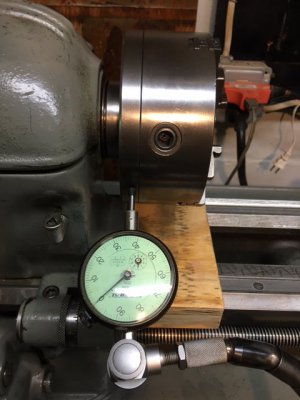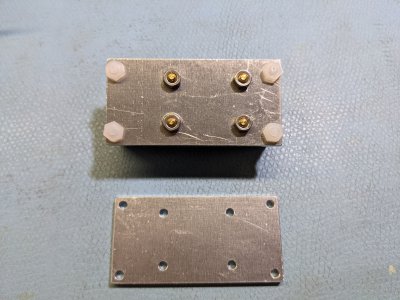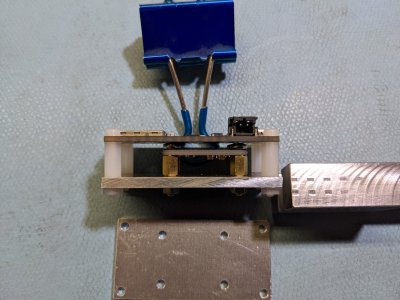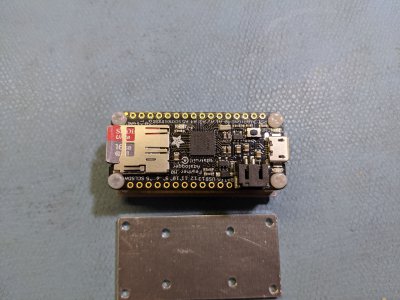- Joined
- Oct 19, 2020
- Messages
- 160
I have been working on the slightly painful task of getting together some tooling for my new-to-me lathe. Not painful in searching for the tools, just painful in paying for them. Ha. Ha.
Anyway, here is my latest bad news good news story. I finally purchased a magnetic indicator stand with a plunger-style indicator. That is the good news. So I decided that I should check how tight my old lathe is. I set up the indicator on my 3 jaw. Much to my dismay, I was getting 5 thousandths deflection forward and back by just pushing and pulling with my hands.

Mind you that I am a green amateur with no one live in person to talk to about my hobby. So now I'm thinking that my spindle bearing must be loose. That's the bad news. 10 thousandths movement just by hand sounds way loose to me. So after a dog walking break I came back to my lathe and started thinking a bit. I grabbed my tail stock and gave it a push and dang. The indicator moved 5 thousandths. Then it hit me. Have you old timers figured it out yet? I had my magnetic base stuck to the chip tray. I was measuring deflection of the tray to the lathe. So I stuck the indicator base to my ways and magically, it only moved about 1 thousandth when I spun, pushed and pulled on my chuck. Back to good news. Looks like its pretty tight after all.
Anyway, here is my latest bad news good news story. I finally purchased a magnetic indicator stand with a plunger-style indicator. That is the good news. So I decided that I should check how tight my old lathe is. I set up the indicator on my 3 jaw. Much to my dismay, I was getting 5 thousandths deflection forward and back by just pushing and pulling with my hands.

Mind you that I am a green amateur with no one live in person to talk to about my hobby. So now I'm thinking that my spindle bearing must be loose. That's the bad news. 10 thousandths movement just by hand sounds way loose to me. So after a dog walking break I came back to my lathe and started thinking a bit. I grabbed my tail stock and gave it a push and dang. The indicator moved 5 thousandths. Then it hit me. Have you old timers figured it out yet? I had my magnetic base stuck to the chip tray. I was measuring deflection of the tray to the lathe. So I stuck the indicator base to my ways and magically, it only moved about 1 thousandth when I spun, pushed and pulled on my chuck. Back to good news. Looks like its pretty tight after all.



